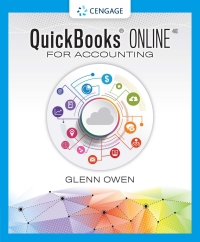BVEO = 100 12. In the current year, company I's profit or loss is E20, its beginning book value of equity is E100, and its ending book value of equity is E110. An analyst predicts that company I's next year's profit or loss will be E50. The analyst further assumes that company I's cost of equity is 10 percent and its abnormal profit growth follows the following process: re= 10% Abnormal profit growth in year t+1 = 0.5 x abnormal profit growth in year t Under these assumptions, the analyst's estimate of company I's equity value is A. 500.00 B. 515.83 C. 741.67 D. 2590.00 D 13. Consider the following information about three industry peers: ROE Price-to-book ratio Price-earnings ratio Peer 1 20% 0.2 5 Peer 2 10% 1 10 Peer 3 25% 5 Which of the following statements about these industry peers is correct? A. Investors expect that the return on equity of the currently best performing peer is not sustainable in the future. B. Investors expect that the return on equity of the currently worst performing peer will improve in the future. C. Investors expect that peer 1's future abnormal profit growth will be positive. D. Statements A and C are correct. E. None of the above statements is correct. A 14. Consider the following statement: "The equity value-to-book ratio is a function of (a) future returns on equity, (b) future book value of equity growth rates, and (c) the cost of equity." This statement is A. True B. Falseit produces lower equity value estimates for firms that use conservative accounting policies (such as accelerated depreciation) than for firms that use aggressive accounting policies (such as straight-line depreciation)." This statement is A. True B. False 9. An analyst produces the following set of forecasts for company F: Year t+1 Year t+2 Year t+3 Profit or loss E100 E100 E100 Dividend payout ratio 50% 50% 50% BVE. = SOO At the end of year t, the book value of company F's equity is 6500. Company F has no debt and its cost of equity is 10 percent. The analyst expects that in year t+4, company F will liquidate all its assets at their book values and pay out the proceeds to its equity holders. Under these assumptions, the analyst's estimate of company F's equity value at the end of year t is A. E112.70 (249.69 E612.70 D. 1056.66 10: Consider the following information about company G's performance and financial position in year t and t+1: Profit or loss year t = (60; profit or loss year t+1 = (80 Beginning book value of equity year t = 6900 Dividend year t = (20; dividend year t+1 = (50 Cost of equity = 10 percent APG Company G's abnormal profit growth in year t+1 is A. (670) . E16 C. E20 D. E30 ROE= 12%% 11. Company H's current return on (beginning) equity is 12 percent. An analyst assumes that the company's ROE will grow indefinitely at a rate of 2 percent. Company H's cost of equity is 10 re = 13/0 percent. Under these assumptions, the analyst's estimate of company H's equity value-to-book multiple is A. 1.00 B. 1.10 C. 1.12 D. 1.25Q4. An analyst produces the following set of forecasts for company D: 249 21geonod but Year t+1 Year t+2 Year t+3 NOPAT E250 E220 E100 Ending book value of net operating assets 800 E860 E800 who divid levane to At the end of year t, the book value of company D's net operating assets is $900 and the market value of its net debt is E300. Company D has no investment assets. The analyst expects that after year t+3 NOPAT will be EO and the book value of net operating assets will remain constant (i.e., at its year t+3 level). Company D's WACC is 8 percent. Under these assumptions, the analyst's estimate of company D's equity value at the end of year t is A. E288.26 B. E368.67 C. E499.48 D. E588.26 5. Consider the following statement: "The abnormal profit growth valuation model differs from the free cash flow and abnormal profits valuation models in that it is not mathematically equivalent to the dividend discount model." This statement isE20; Expected dividend (end of) year t+3 = 10. The analyst further expects that company A's dividends will be zero after year t+3. Company A's cost of equity equals 10 percent. Under these assumptions, the analyst's estimate of company A's equity value at the end of year t is A. E31.16 EVO= D Dz + B. E33.13 ( ire ) ' + D3 (itrey (here) s C. E36.36 10 20 D. E40 (It 10%)' + (1+ 10 %% )' + (1+ 10 %%) 3 = 33.13 2. An analyst predicts that company B's dividend at the end of year t+1 will equal E10. The analyst further expects that after year t+1 company B's dividends will growlindefinitely at a rate of 2 9=2. percent. Company B's cost of equity equals 7 percent. Under these assumptions, the analyst's estimate of company B's equity value at the end of year t is A. E100.00 B. (111.11 C. E142.86 D. E200.00 ( 3. An analyst produces the following set of forecasts for company C: t Year t+1 Year t+2 Year t+3 Profit or loss E100 E120 E60 Ending book value of business assets (000 E1,030 E1,060 E1,000 Ending book value of debt 700 E720 6740 E800 C's book values of business assets and debt are E1,000 and (700










